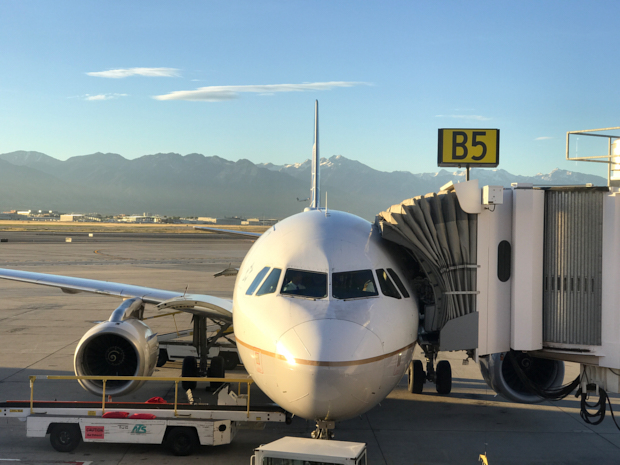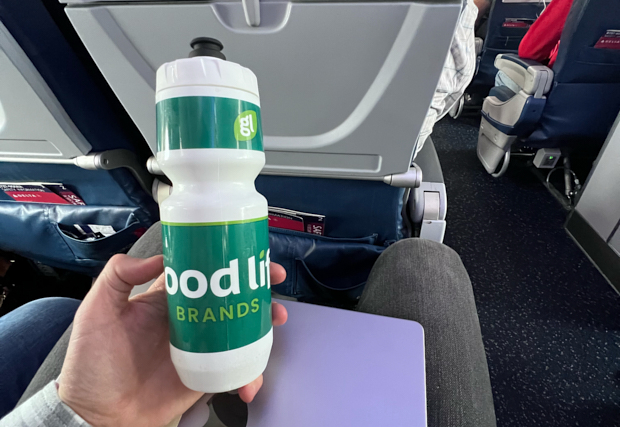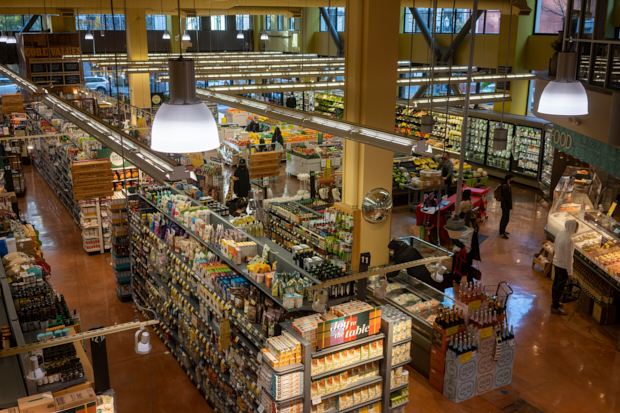The Planner’s Guide to Travel Nutrition

Flying to a race? Managing all the aspects of travel can be tricky. While things like itinerary, race schedule, accommodation, and logistics may be front of mind, how you handle nutrition on the road can set yourself up for success. This is the planner’s guide to travel nutrition.
Booking accommodation: Will you have a kitchen? If you’re staying in a hotel room, is there an option to include a microwave or minifridge? These details can inform if you’ll need to be more reliant on eating out for meals or planning to buy more shelf stable food items to keep in the room. There are many pros that travel with a rice cooker which allows them to cook healthy meals in their hotel rooms. This can be particularly beneficial when food access may be an issue or for race locations with known food safety concerns.

Travel: Review total flight time and meals served on board. Short layovers can leave little room to find food options in between flights. You may not be getting in lots of training today, but it’s important not to skip meals or to go too long without eating. Plan to have something to eat every 3-4 hours.
It may be beneficial to increase your probiotic intake in the two weeks leading up to your trip. Traveling can be stressful, and it’s fairly common to catch some unwanted illness on the way to a race. Probiotics may provide some benefit to your immune system, and there’s little downside to increasing intake of foods sources of probiotics. Examples of probiotic foods to increase include yogurt, kefir, sauerkraut, tempeh, kimchi, or kombucha.
Are you traveling abroad? Will you have access to some of your favorite items like peanut butter, coffee, or favorite candy? Be sure to pack what you can’t live without.
It’s better to have too much than too little. When packing your race day fuel, carry extra. This means extra water bottles, extra gels, extra sports drink mix. Things happen. You don’t want to be scrambling to find what you need in the last few days leading into a race.
During Travel
Make fluid intake a priority. It’s easy to get dehydrated while traveling due to the low humidity in the air cabin. Plus, long travel days, dehydration, and prolonged inactivity can disrupt regular GI function causing constipation. A fiber-rich snack, prunes, kiwi, or chia seeds may help get the bowels moving. Carry a water bottle with you and aim to pee every few hours. I realize getting up frequently doesn’t seem ideal, but, on the plus side, walking up and down the aisle can help avoid travel stiffness.
Follow good hygiene protocols. Wash your hands frequently with warm water and soap. Avoid touching your face, and bring hand sanitizer with you. The last thing you want to happen is to pick up and illness on the way to a competition.
I like to take some time while traveling to create a grocery list. It’s important plan for carb-rich snacks for the day before the race. Also, plan for the little, often forgotten items like salt, pepper, condiments, cooking oil, etc..
At the race location
Assess your living situation. Is it what you were expecting? Do you have a fridge? Freezer? Take note of what cooking equipment and utensils are available to you. Do you have a way to store food with Tupperware or accessories like ziploc bags, and aluminum foil? Are you sharing the space with other athletes or family members? All of this information will inform your shopping choices.

In my opinion, the grocery store should be your first task after checking into your accommodation. Check in, acquire food, then figure out your next steps of the day. Make it easy on yourself by having familiar, carbohydrate-rich snacks and drinks readily accessible for the days leading into the race. Some people argue that building your bike is priority number one upon arrival. My argument is: should you run into a problem, do you really want to be hangry while also dealing with bike issues? Problem solving requires brain power, and a fueled brain functions better than a deprived one.
In locations where you need to be concerned about food safety, you’ll need to be more mindful about your food choices. If you’re unable to drink the tap water, choose bottled, boiled, or carbonated beverages. Avoid ice cubes. Use bottled water from brushing your teeth and washing dishes. If consuming raw fruits and vegetables, choose ones that have an outer layer that can be peeled away. Otherwise be sure your food is fully cooked, served hot, and hasn’t been sitting out.
Eat on your new time zone. This is one of the most beneficial ways to help you get into rhythm and lessen jet lag at your new location. Create a go-to routine that works for you for the days leading into the race. Avoid trying new foods that could lead to GI upset. Find a pre-race meal that's familiar and easy. Make a habit out of what works for you to create a stress-free few days leading into the race.
There’s always lots to think about. But being proactive, thorough, and creating a routine will help set yourself up for a great race.


Start the discussion at slowtwitch.northend.network